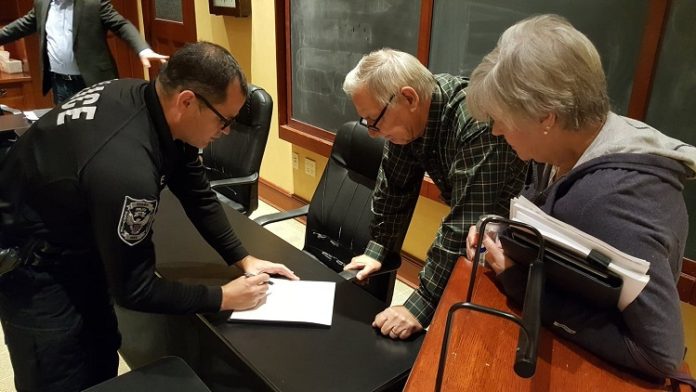
The Perry City Council narrowly approved moving ahead last week with an Iowa Department of Transportation (DOT) plan to apply an asphalt overlay to Iowa Highway 144 (First Avenue) and to convert the in-town portion of the roadway from four lanes to three lanes, a configuration already seen in the vicinity of First and Willis avenues.
“I just hate this street,” said council member Chuck Schott, who opposed the project. “I hate this corner. Every time I park out here and try to get out of my car, there’s a semi coming east from the pork plant, and they’re cutting clear over against me so they can get their back wheels in there.”
Perry City Council member Vicki Klein joined Schott in opposing the DOT project, which will be wholly paid for by DOT Traffic Safety Improvement Program (TSIP) dollars and will cost the city virtually nothing.
“I have a concern down here if we go south,” Klein said, referring to the intersection of Iowa Highway 141 and Iowa Highway 144 (First Avenue). “You’ve got them coming off of 141, okay, and they’re turning, okay. There’re a lot of turns there, a lot of turns there. You’ve got them going about 50 — I don’t know exactly what the speed limit is — and they’ve got one lane to be in.”
Schott said adapting to the spring 2016 redesign of the First-and-Willis intersection has been difficult.
“I cannot get used to driving in these three-lane streets,” he said. “I do not find them easy to use or handy to use or beneficial in any way, shape or form.”
One private citizen also spoke against the DOT project during the council’s open forum. Charles Stromquist of 2302 First Ave. said he must slow down significantly when approaching his driveway from the south on First Avenue. He said reducing northbound traffic to a single lane will concentrate all the northbound traffic behind him, causing it also to slow and possibly leading to rear-end collisions.
“I absolutely cannot understand why you would change a four-lane road to a two-lane road with a turn lane,” Stromquist said. “This might work out for the people turning left, but what about people that turn right? I turn into my driveway every day. If you change this to a two-lane, all the traffic is going to be behind me, and what happens when you have a string of cars and a grain truck or a truck full of hogs? Now all of a sudden they have to come to a screeching halt so I can turn into my driveway. This is going to happen all along this street, not just at my house. I think it’s a tremendous waste of resources to change a four-lane road to a two-lane road. I don’t see any way this is for the better.”
Most of the concerns raised by the project’s opponents were addressed by its advocates, which included Perry Police Department Chief Eric Vaughn, Perry City Administrator Sven Peterson and Matt Ferrier of Bolton and Menk, the city’s engineering consultant. Their trump card was increased traffic safety.
Perry City Council member Dean Berkland asked Vaughn whether he has “noticed accident rates going down since this has been changed to a three” at the intersection of First and Willis avenues?
“I don’t have those specific numbers,” Vaughn said, “but I can tell you that, from my recollection, the accidents at least at this intersection and this two-block area from Willis have decreased, especially the severity of the ones that we’ve had. And I think that’s the understanding in moving from four lane to three lane is the calming effect. It’s a slowing of traffic.”
Proponents of the project point to a mountain of DOT data supporting the claim of increased safety. Fewer lanes mean fewer conflict points, Ferrier said, and an isolated turning lane reduces weaving and promotes traffic flow.
Ferrier said transportation planners sometimes refer to such conversions as a “road diet.” It is a relatively low-cost way to improve the safety of a street without rebuilding it. Safety studies by the Federal Highway Administration (FHA) show road diets can reduce overall crashes anywhere from 20 percent to nearly 50 percent, particularly among drivers under 35 years old and more than 65.
“Road diets can reduce the vehicle speed differential and vehicle interactions, which can reduce the number and severity of vehicle-to-vehicle crashes,” according to the FHA’s road diet informational guide.
Alternative transportation advocates also like road diets because they often integrate bicyclists, public transit and pedestrians. Designated bike lanes and sidewalks can be layered on the outside of the travel lanes, but Perry’s outer lanes will be programmed as shoulders.
Peterson, who spoke to many of the most common objections during discussions around the 2016 redesign of the intersection of First and Willis avenues, said a redesigned Iowa Highway 144 (First Avenue) will improve safety both for vehicles and pedestrians.
“I want to reiterate that the important thing to keep in mind with this is safety,” Peterson told the council, “and then reducing speeds and reducing opportunities for accidents, which is what we talked about and what we did with the project right here in front of city hall with the intersection and starting that lane conversion. I really do understand that change is hard to get used to and hard to swallow sometimes, but it is my professional opinion as city administrator and my recommendation that we do move forward with this.”
While Schott and Klein registered their opposition, other council members also expressed some skepticism.
Perry City Council member Barb Wolling, sharing Stromquist’s concern, noted the heavy northbound traffic on Iowa Highway 144 (First Avenue) and the danger of right turners who slow to turn.
“Dewey, North, Park — all of those are heavily used east-west roads,” said Wolling, whose third district is bisected by the largest stretch of the busy state highway. “There’s always a lot of traffic, and I see that as a conflict.”
Ferrier discussed the “logical places where a car accident could happen,” also known as “conflict points,” and said a road diet would reduce their overall number. He admitted Stromquist and Wolling were correctly identifying a conflict point but noted the “swerve potential” of the center turn lane might mitigate the conflict.
Ferrier also said right turners during rush hour on the three-lane roadway would cause “an increase in the amount of time it would take you to go through that corridor by maybe 10 to 15 percent as a result of that movement (of right turns). So while it does slow traffic down, and you have more of those movements of people turning right that do impact that, the overall corridor stills functions fairly efficiently, especially with our traffic counts.”
Perry City Council member Dr. Randy McCaulley asked whether the council could afford to postpone a decision in favor of further consideration.
“I appreciate what the gentleman said as far as the turning lane,” McCaulley said. “I also respect the Department of Transportation and know they have people that study this all the time. I’m not in a position to argue their statistics here, but I’m just wondering if there’s a possibility for us to take some more time to consider this. Are they pressing us for a decision tonight?”
Peterson said the DOT District Four planner told him “he needs an answer in ‘early October’ to be able to program it for the next fiscal year. Otherwise, it does get pushed off to the next fiscal year.”
The council appeared to be poised between the carrot of a no-cost First Avenue overlay and the stick of a First Avenue road diet. Peterson framed the question from the DOT’s perspective.
“They are wanting to make sure that we are all supportive of this project so that they can program the funding for their next fiscal year,” he said. “If it doesn’t happen, then the money will go somewhere else. Somebody else’s road will get overlaid and converted to a safer thoroughfare. It’s not money that will be flowing through the city. It won’t be a city project, but it is money that would not be invested in our community if it was decided not to go this route.”
Wolling shared a personal story that moved the council’s deliberations toward a decision. She said when she visited her sister in Eugene, Ore., she frequented a busy four-lane business district that was “snarled constantly” and was “a nightmare to get through — you had people turning right. You had people turning left — it was like total chaos all the time.”
She said she visited her sister again after the four-lane highway underwent a three-lane road diet.
“I was there a year ago, which was like a year after they’d done it,” Wolling said. “That road was completely different. It was calm. People are mindful of all of the business-turning traffic, and it truly has calmed traffic and made things more accessible.”
She said she is fond of Perry’s four-lane highway, “but I’ve seen what a three lane will do. It was like a totally different district. The traffic was better. People were more aware. The people who were going through weren’t getting tied up as long, and traffic was moving better overall.”
Berkland pointed the moral: “Everybody needs to get used to a change,” he said.
“I’m on board with making this change,” Wolling said. “I’m not sure that I really like it, but I have seen what it can do, and I’m willing to give it a chance.”
“I think it could work,” McCaulley said.
“Nobody will like it,” Wolling said. “It’s change. But I think that in the long term it will probably be a good thing.”
With that, Wolling moved and Berkland seconded the resolution, which passed on a three-to-two vote.
Peterson said the council’s approval of the project will be followed by the start of design plans for the highway. The city will also mount a sustained effort to persuade Perry-area motorists of the wisdom of improving traffic safety, including critics who might claim, contrary to the data and the advice of technical experts, that the redesigned road will actually put the motoring public at greater risk.
“This is just kind of that first step,” Peterson said. “From here, we would start to engage with the DOT in public outreach and public education as well as that design phase.”





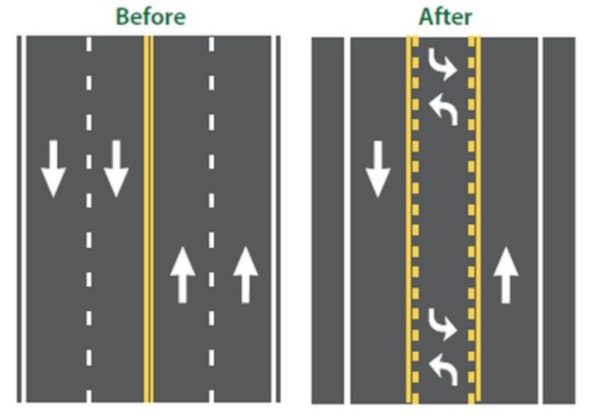
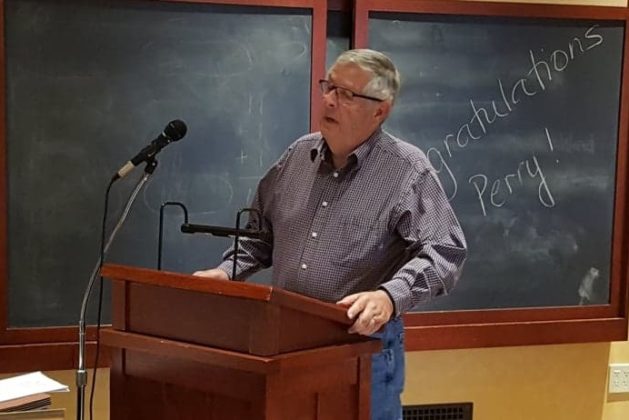
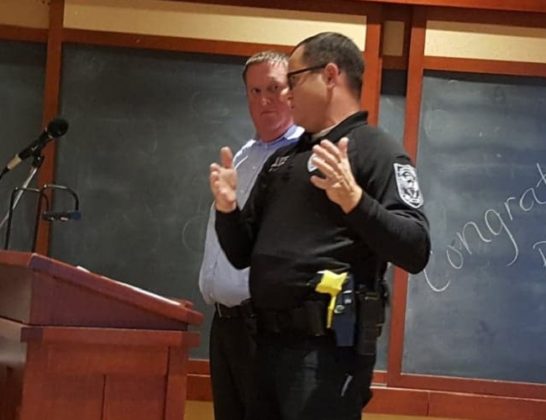
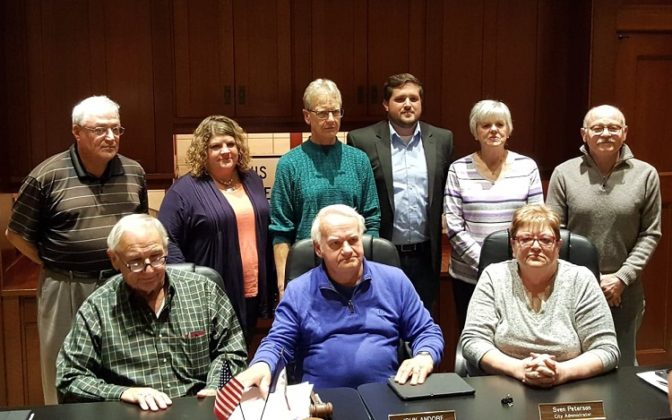












I have lived on First Avenue for 50 years. In that time I have seen the amount of traffic increase, especially truck traffic. I have these suggestions for the city council to consider:
1. Reduce the speed limit! Where else in a residential district can a driver legally go 45 mph?
2. Sidewalks are needed from Park Street north to Northgate Estates (Bar Jac trailer court), at least on one side of
the street.
3. Increase the number of street lights. Some areas are very dark north of Park Street.
4 A flashing yellow light is needed at the entrance to Northgate Estates (Bar Jac trailer court).
[…] council narrowly approved moving ahead with the redesign effort by a three-to-two vote last October. When carried through, the project […]